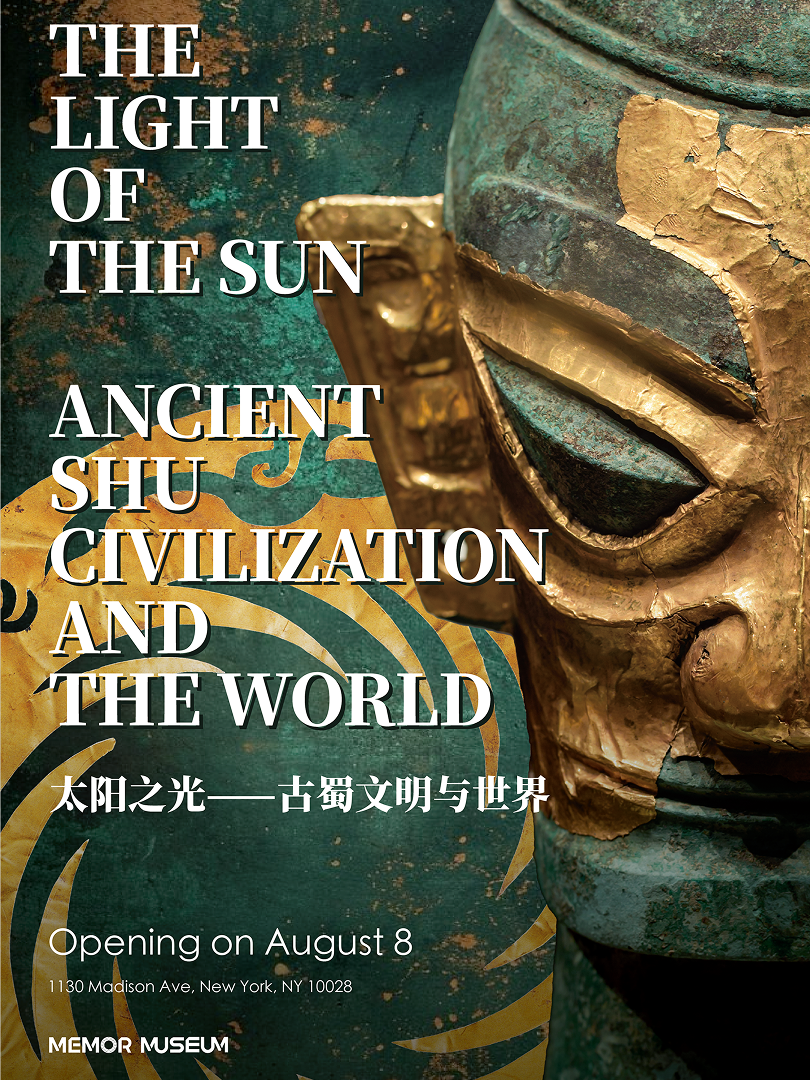

The golden mask, the Sun and Immortal Birds artifact, and the bronze sun wheel
Aug 8, 2025
-
Light of the Sun: Ancient Shu Civilization and the World presents a comprehensive exploration of the shared phenomenon of sun worship across ancient cultures. From Egypt, Mesopotamia, India, and Greece to early China, the exhibition traces how humanity has long sought to understand and revere the sun as the source of life, order, and power. The sun’s universal symbolism—embodying light, vitality, and authority—reveals striking parallels in the beliefs and imaginations of civilizations separated by geography yet connected through their spiritual expressions.
The exhibition further highlights the extraordinary discoveries from the Sanxingdui and Jinsha sites in Sichuan, where the ancient Shu civilization flourished more than three millennia ago. Through a selection of bronze, gold, and jade replicas, along with advanced 3D reproductions, the Shu people’s unique cosmology is vividly conveyed. Their artistic integration of the sun with birds, trees, and divine figures reflects not only a profound cosmological vision but also a distinctive contribution to the diversity of world civilization.
By situating the ancient Shu alongside other great civilizations, this exhibition underscores both the universality and the individuality of human cultural development. It demonstrates how civilizations, while diverse in form, converge in their spiritual pursuit of light and transcendence.
《太阳之光:古蜀文明与世界》全面探讨了太阳崇拜在古代文明中的普遍现象。从古埃及、两河流域、印度、希腊到古代中国,人类自古便试图理解并敬畏太阳,将其视为生命之源、秩序之本与权力之象征。太阳所承载的普遍意涵——光明、活力与权威——揭示了分处不同地域的古代文明在精神表达上的高度相似性与相互呼应。
展览重点呈现了四川广汉三星堆与成都金沙遗址的重大考古发现。三千多年前繁盛的古蜀文明,遗留下大量精美的青铜、黄金与玉器。本次通过文物复制品与先进的三维打印成果,生动再现了古蜀人独特的宇宙观。其将太阳与鸟、神树及神祇结合的艺术表达,不仅体现了对自然与宇宙的深刻思考,更展现了古蜀文明在世界多元文明格局中的独特贡献。
通过将古蜀文明置于世界古代文明的广阔背景中加以比较,本展览强调了人类文化发展的共通性与多样性。它揭示了不同文明在形式上的各自独特,同时在人类对光明与超越的共同追求中展现出深刻的联结。